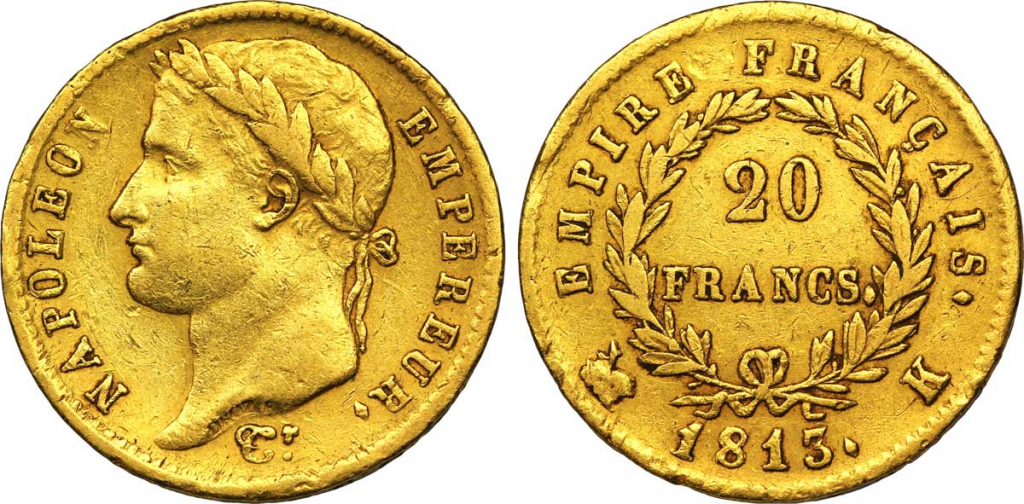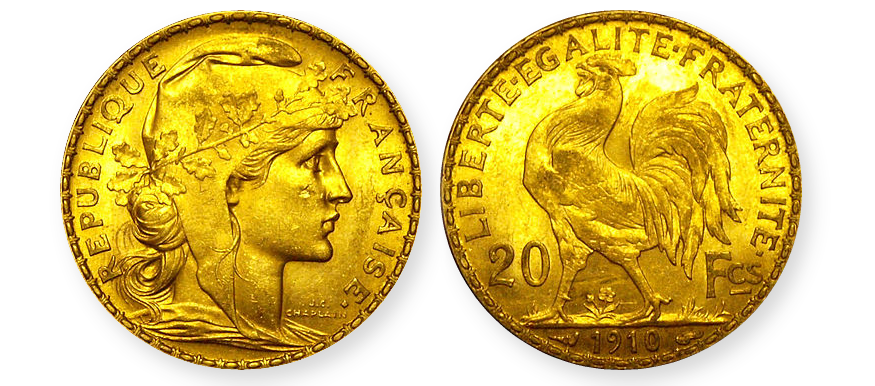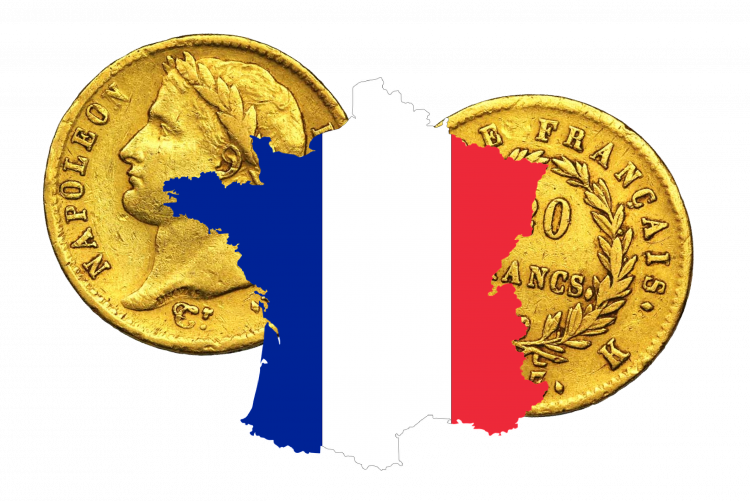No.6: 20 Francs Napoléon Gold Coin
The first Gold Napoléons were struck on March 28, 1803. These coins feature the portrait of Napoléon I on the obverse. The Napoléon Gold Coin model then became a model for all Latin Union gold bullion coins until 1914. The coin has the same value as a Louis d’Or.
During the time of Napoléon I, more than 20 mints were producing these coins. Besides many French cities such as Paris, Strasbourg and Marseille, other cities like Rome, Turin, Utrecht and Geneva minted coins. We can almost say that the 20 franc Napoléon Gold coin was the euro before the euro.

The Gold Napoléon name has lasted throughout the regimes. It alternately featured Louis XVIII, Charles X, Louis-Philippe, Napoléon III, as well as various republican symbols, for example the Napoléons Ceres, Marianne, Hercules and Coq.
There are 23 types of 20 Francs Gold coins. Although we can distinguish them by the people or symbols they depict and by the annotations that can be found on their obverse and reverse sides, they share the same properties. They all have a diameter of 21 mm, a weight of nearly 6.45 grams and made of 90% pure gold. Including the remelting, more than 515 million 20 Francs Napoléons Gold coins were struck in the course of history.
The 20 Francs Gold coins have long been listed on the stock exchange. Their weight in pure gold determined their value, with a small premium in addition. At that time, the 20 Francs Gold coin was mainly an investment coin because of its high prevalence.
Nevertheless, many of these coins now have a numismatic value higher than their simple gold weight. It’s due to their exceptional state of preservation, manufacturing characteristics or the relative rarity of certain vintages. It now attracts both numismatists and investors.
Focus on the 20 Francs Marianne Rooster Gold Coin
The name of this coin comes from the animal on its reverse and the surname of its engraver Jules-Clément Chaplain. We can also see Marianne on its obverse.
It was struck from 1899 to 1906 with the inscription “Dieu protège la France” (God protects France). Due to the separation of church and the French State in 1905, they decided to change this phrase to the famous motto “Liberté Égalité et Fraternité”.

This first minting period lasted until 1914. As a matter of fact, the First World War brought a halt to the production of these coins. Moreover, the quantity of gold required for its production was too significant. During this period, the gold market also closed starting on July 27, 1914.
Between 1951 and 1960, following the reopening of the gold market, 20 Francs Gold coins got back into circulation, with 37 million units issued. The coins minted during this period read the years 1907-1914. This explains the excellent general condition of the 20 Francs Marianne Coq Or coins.
Previous article: Saint-Gaudens Double Eagle (5/15)
Next article: Gold Mark (7/15)

